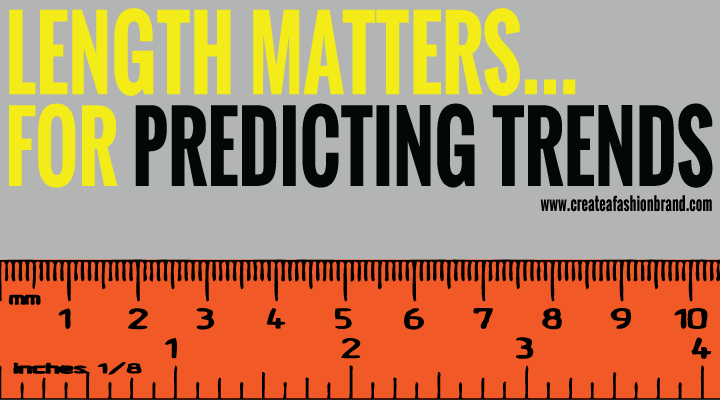There are two types of trend prediction and many of you will have terms that feed into these concepts like fast ‘fashion’ for example. Well prediction in itself can be a little misleading. There are of course themes, shapes, materials and other aspects that can be seen coming a mile off, but have you ever noticed a sudden rush of friends going out to by the latest dress shape, computer game, toy or other such device?
The longer range trend prediction is the type talked about a year or more before the season. It’s the themes that are shown in trend books, trend shows, trade shows and covered as the latest development in all of your industry magazines.
These are the easy ones. These are the ones you can plan for, develop and manufacture just in time for them to be ready and on the shelves just at the right time. They shouldn’t be seen however as a push over to predict. They still need some time and effort. Some consideration should be taken to cover all of your bases and of course, you should never rely heavily on one source of information. The best way to find these is to find as many credible (and by that I mean accurate and expert) sources of information as possible. A random post on the internet is not going to cut it. Look at everything and find the common denominator. This you can pretty much guarantee will show up as a trend. The main key to this is that if every source is covering it, then the likelihood is that the source these places got their information from would have talked about it and so on as far back as it can go.
But if trend prediction is key to retail in any design area and by it’s very nature is a ‘prediction’ then the ironic thing of a short term, surprising trend sounds a little conflicting surely?
Well the answer to that is yes. Unless you have a magic predicting machine, you will always be caught out by something. This happens especially when economically things are good. During most economic downturns, even the highest paid designers still have to be responsible ultimately for sales of their products, so people take fewer risks even if they don’t realise it.
During most seasons however there will always be something that will catch you out. The final answer for not being caught out is……
You can’t! It’s impossible.
But you can be ready. Usually and in this example fashion, fast fashion trends are usually something that has been incorporated into a longer range trend prediction and has then, for whatever reason, been highlighted by a designer which propels it forward as it’s own trend or key element. Now this can be a colour, shape, material, really anything.
I remember working for a company many, many years ago (before this image I might add) when gypsy skirts were absolutely huge. Every woman, child and dog it seemed like, was wearing one and you couldn’t escape them, in every colour and pattern.
Well going back a year or so before that season, they weren’t unfortunately spelt out as a key shape for any trends in that companies trend prediction books they bought. I might add, these were very credible ones. The skirts were mentioned of course, but not highlighted. They were just mixed in with some trends and colours.

A spunky little upstart at the time, had tried to mention the feeling in her gut as she thumbed through the sources and had matched some colour and imagery that suggested that a more tropical theme might be big, but I was of course hushed for being far too insignificant. Yes that little upstart was me. Anyway to cut a long story short a year later many other retailers had predicted them correctly or had managed to get them produced quick enough for it not to be a total disaster. We hadn’t. Well a few months later and at around a loss of £3 million in profits later, the head of ladieswear was fired and my boss was promoted for apparently spotting this trend and being hushed.
[Yes this really happened and I was p***** especially as she didn’t even know what Pantone was when she started and don’t even get me started on the salary difference……]
The moral of course is that even if you don’t necessarily know what the short term trends will be, you can still prepare for them. Have some ideas that you think might develop. If nothing else, you might find they will be bigger the year after and you will be ahead of the game. The key really is to look at everything. I can’t stress enough how many people dismiss something because it doesn’t seem important to a particular source of information, but in the wider scheme of things, suddenly it becomes clear.
The most important thing to realise is that however hard you try, trends really are down to a long line of choices. Decisions made by the highest level of people, that are then interpreted by the next level and so on until, it ends up in your prediction book or on a catwalk. You will never know everything and that is ok. Just try to minimise the damage by being ready to move at the first sign of a new development and just try to trust your ‘gut’.
If you can see a connection and you can translate that item to your customers, then it won’t matter and sales essentially will be up. If it makes sense to you, your brand and your customers, then trend or not, it will be successful. Adaption is key to this. If you need some more help on translating your trends to your customers, then you can read more on Adaption here: The Adaption Problem
